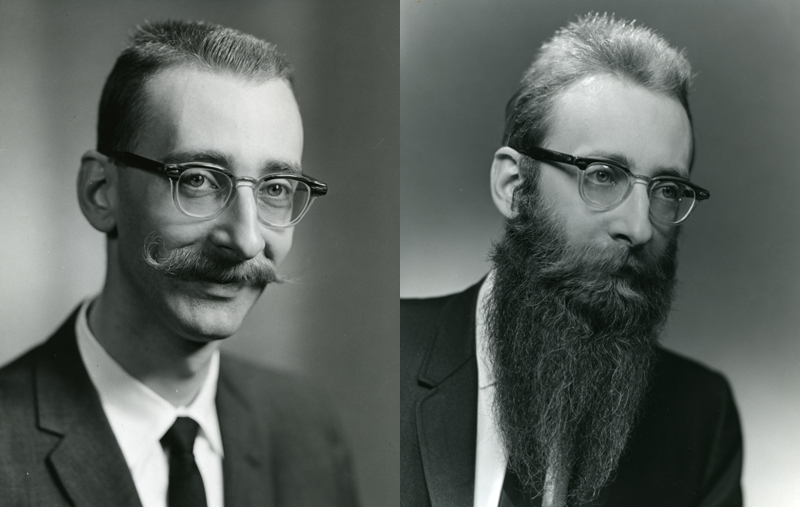The Public Affairs Department of the David Sarnoff Research Center maintained biographical files of employees. On the visual side, the materials mainly consist of black and white photographs and negatives. Unsurprisingly, this means many, many folders filled with head shots of white men, and in the aggregate they provide evidence about the relative homogeneity of science and engineering fields in the twentieth century. But this is not the only information social historians can glean from the photographs.
These are corporate artifacts that offer information about costumes. The individuals who sat for pictures dressed in a manner deemed appropriate for their workplace, exercising personal preference within a range of available options. Wide or narrow ties, loud patterns or subdued solids, long hair or short, clean-shaven or sporting facial hair, the style of glasses—all these things shift over time, and can in fact provide clues about the date of a photograph. But aside from a visual tour of twentieth century fashion, the photographs can answer (or pose) questions more complex than “when was this picture taken?”
Consider the frankly epic facial hair of Charles M. Wine. Beard and moustache are outliers in the collection. They read as more an expression of personal style than the prevailing fashion of the time. They also attest to Wine’s ability to balance a whimsical presentation with his professional employment. Educated in electrical engineering, Wine held sixty patents for work in various areas of computer technology, voice recognition, and graphic displays. The graphic evidence of these photographs may be of interest to those who wish to explore the intersection of masculinity and computer science or contextualize current workplace issues, including the policing of women’s fashion, the politicization of African American women’s hair, and the risks of gender-nonconforming presentation.

Charles M. Wine, 1964 / 1978
The Public Affairs Department did not set out to document the history of costumes and grooming in New Jersey, nor provide fodder for the examination of social issues. Corporate photography is more prosaic in its aims. That straightforward, goal-oriented nature makes it particularly valuable for historians. The photographs were taken so that they could be published and reflect well upon the company. The images deemed appropriate for this use can tell us a great deal about the people behind the cameras and the ones they imagined gazing at the final images.
Megan Miller was the summer 2015 David Sarnoff Library collection processing intern in the Audiovisual Collection and Digital Initiatives Department of the Hagley Library.
